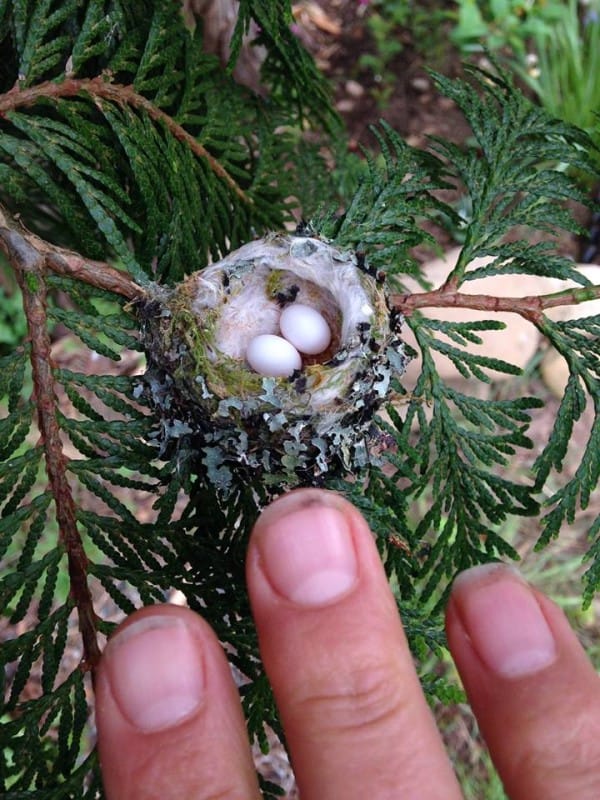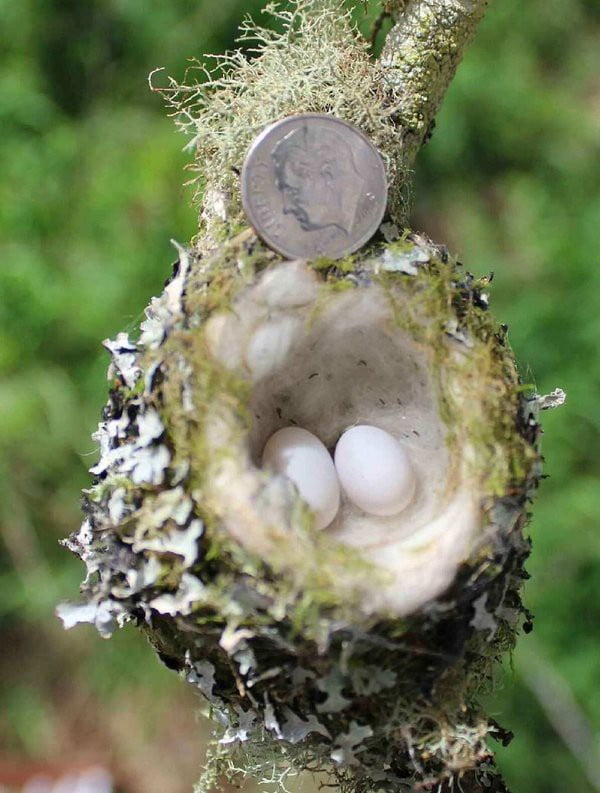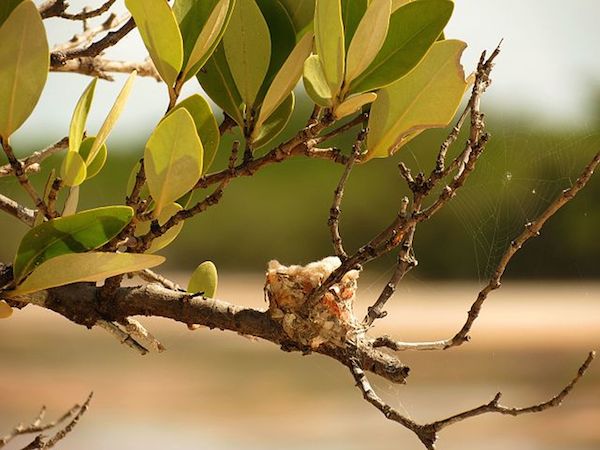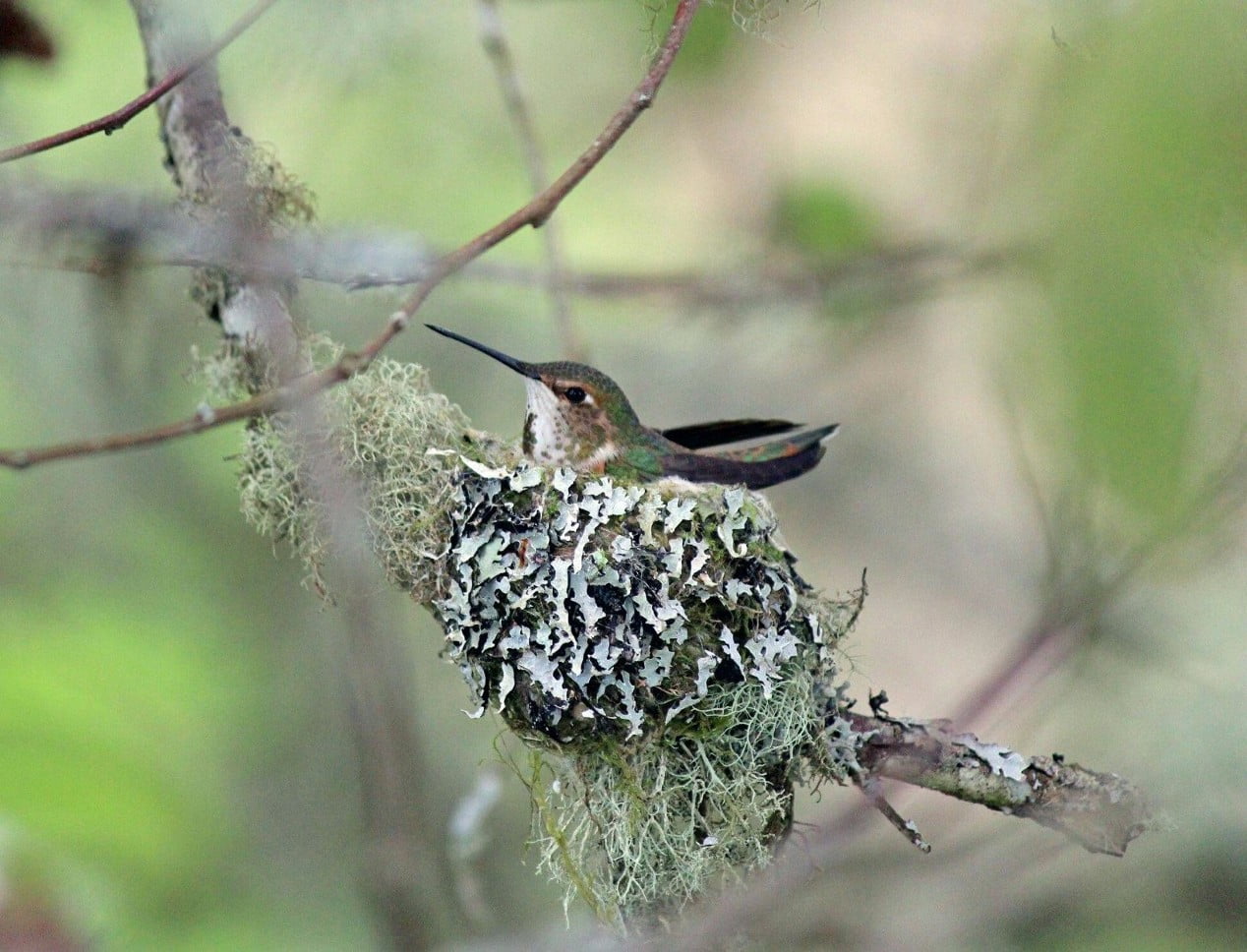Hummingbird Nests are as Small as a Thimble, Be Careful Not to Prune Them

Some hummingbird species are endangered; they are tiny, delicate birds that are only a few inches long and lay eggs the size of a jelly bean.
Here are a few pointers on how to recognize them.

“Hummingbird eggs are about the size of jelly beans, and they’re small!” Please remember to inspect trees and shrubs for nests before trimming them.”
34 hummingbird species (or 10% of all hummingbird species) are classified as “critically endangered,” meaning they have a 50/50 probability of extinction in the next ten years.
It’s critical to keep a watch out for their small nests while pruning to ensure their survival.

According to The Hummingbird Project, the nests are normally built on a downward-slanting branch, and they are frequently found on a branch hanging over rushing water or open space.
Their nests are made of spider webs, lichen, and plant detritus, making them incredibly fragile. Their nests are likewise well camouflaged by the lichen.

Hummingbirds flap their wings at a rate of 50-80 beats per second, making them a blur to the naked eye. If you’ve ever seen a hummingbird fluttering its wings, it’s typically because the footage has been slowed down or the hummingbird is landing.

Their metabolism is as quick as their wings, and their weight fluctuates dramatically throughout the day as they eat and burn energy; as a result, they consume anywhere from half to eight times their body weight in sugar per day, and the average hummingbird feeds 5-8 times per hour, which means they spend a significant portion of their waking day feeding!

Their hearts can beat over 1200 times per minute! If you compare that to the average human whose heart beats around 80 times per minute, that means every time our heart beats once, the hummingbirds heart beats 20 times, it’s crazy!




